Search Images
Browse Content (p. 1462)
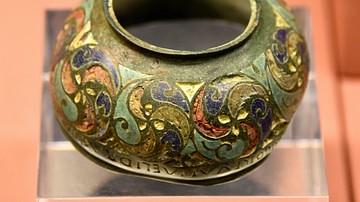
Image
The Staffordshire Moorlands Pan
This is also known as the Ilam pan, a souvenir of Hadrian's Wall. This colorful bronze pan lacks its handle and base. The flamboyant Celtic style ornement is inlaid with turquoise, blue and red enamel. The inscription below the rim lists...
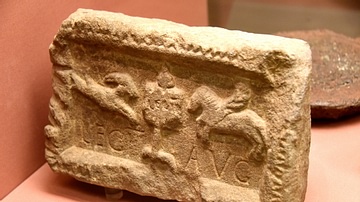
Image
Building Stone from Hadrian's Wall
The inscription "LEG II AVG" is marked both on and below a military standard flanked by a goat and a Pegasus. It records the completion of building work by the 2nd legion Augusta. The Pegasus and Capricorn were the emblems of that legion...
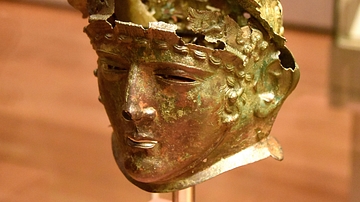
Image
The Ribchester Helmet
A two-piece helmet of embossed bronze consisting of a head piece and a face mask. The scene on the head piece is of a skirmish between infantry and cavalry. Fittings survive on the head piece for a crest-box and a pair of trailing streamers...
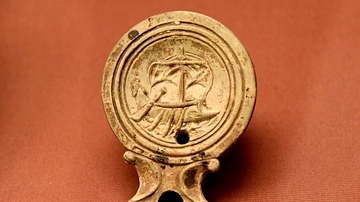
Image
Terracotta Lamp from Essex
Vessels like the ship on this lamp were used by the British fleet whose duties included reconnaissance, warfare, and transport. From Colchester, Essex, UK. 1st century CE. The British Museum, London.
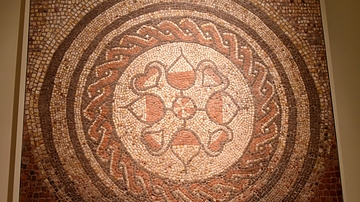
Image
Mosaic from Abbots Ann
The Roman villa at Abbots Ann, near Andover, was discovered in the early 1850s CE. The portions of mosaic floors uncovered were in a bold and simple style, using large tesserae in a limited range of colours, but following Roman geometric...
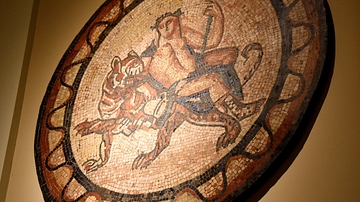
Image
Leadenhall Street Mosaic
The mosaic from Roman Britain, features Bacchus riding on a tiger rather than the more usual spotted leopard, referring to the myth that the god visited India. Appropriately enough, the mosaic was discovered during building work on the premises...
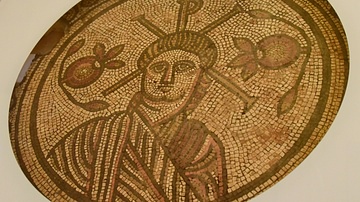
Image
Mosaic Floor from a Villa at Hinton St. Mary
This is the central roundel of a 4th century CE mosaic floor from a villa at Hinton St. Mary, Dorset. It is one of the most important early Christian remains from the Roman Empire. The roundel is probably the earliest known mosaic picture...
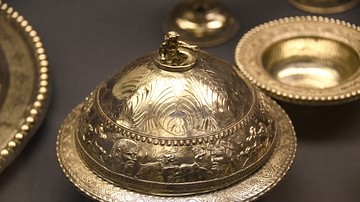
Image
Flanged Bowl & Cover from The Mildenhall Treasure
The bowl with its dropped horizontal rim and niello decoration is the earliest vessel in the Mildenhall treasure made in Gaul in the 3rd century CE. It was not designed to have a lid. The deep-domed cover with a border of Bacchic ornament...
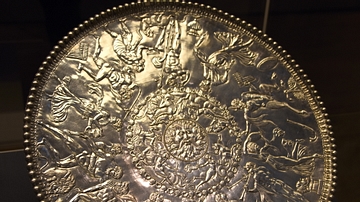
Image
The Mildenhall Great Dish
The most famous object in the Mildenhall treasure is the large, highly decorated circular platter, usually known as the Great Dish, or as the Neptune or Oceanus Dish. Bacchic imagery has a long history in Greek and Roman art, and this example...
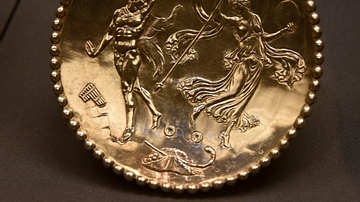
Image
Platter with Bacchic Decoration
This small dish or platter (one of a pair) with a Bacchic scene is closely related in style and subject to the Mildenhall Great Dish itself. Both show Maenads (female followers of Bacchus) dancing and playing musical instruments, in one case...